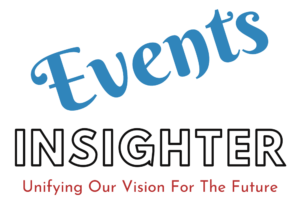A few weeks ago I was contacted by BizBash to contribute to their article, “From A to Zoom: Tips on Planning Virtual Events From Tech-Savvy Industry Pros,” given how Zoom user numbers were blowing up to over 300 million while the use of that platform was being blocked for security reasons by companies like Google, schools and government agencies.
The timing aligned with my own research of Zoom having had experience with “Zoom bombing” first hand, so I was happy to provide the writer, Michele Laufik, with tips for increasing the security of their home networks and improve video conferencing performance to help prevent the screen freeze.
Days prior I had been watching a hilarious comedy event on Zoom when one of the users took over the live stream to share their view of some porn site. The moderator eventually got things back on track, and even though our particular experience was brief and one we could laugh off, others such as Black Lives Matter, 12-Step meeting organizers, communities of color, and church ceremonies had experienced horrific incidents of hatred, racism, homophobia, and harassment on Zoom.
Even after the Zoom CEO Eric Yuan apologized for the weaknesses in security and vowed to dedicate their engineering efforts to making Zoom more secure, something that should have been prioritized years ago, incidents continue. Last week a video conference between Lisa Blunt Rochester (D-Del.) and Philadelphia representatives was Zoom bombed, “It was racist, it was sexist, it was immature.”
Zoom has become very popular (it grew by another 100 million users since April 2’s apology by Yuan) but it isn’t the only platform out there.
This streaming technology research series will do deep dives into the variety of platforms available, their strengths and weaknesses, plus first-hand advice and insights from power users. And if you’re set on using Zoom, best practices and recommendations to avoid being “bombed” will also be presented.
I’ll break down those platforms that are ideal for video conferencing and webinars separately from those that are designed for smaller groups and internal meetings with teams or clients. Having researched, written about and moderated numerous industry sessions on live streaming for festivals and concerts, I’ll delve into the platforms that deliver live experiences to fans and audiences but on a smaller scale and cost, given many performances and events are taking place in homes rather than huge fields or venues.
In addition to the ins and outs of the platform’s functionalities, you’ll also learn ways to optimize network performance and increase overall security and get tips on how to present your best self from experienced hosts.
Last but not least, I’ll cite examples of how content creators of all shapes and sizes are finding ways to monetize their events as well as use their streamed activities to raise money and awareness for charities.
Next week’s first installment of the series will feature StreamYard, a platform I discovered by tuning into (using that term figuratively, of course) “Better With Paul” on LinkedIn Live, presented by Paul Carrick Brunson. As a serial entrepreneur, co-founder of Knowledge Share, business columnist at USA Today, and a LinkedIn Top Voice, Paul’s got mad business skills and knowledge to share, which he does every Monday and Friday to over 1,500 people from all over the world. He was generous enough to share with me how he chose StreamYard and his power user tips, which I look forward to sharing with all of you.
If you’d like to be featured in this series either as a platform company or a power user, please contact me at kim@festifi.co.
Image: Photo by Chris Montgomery on Unsplash







